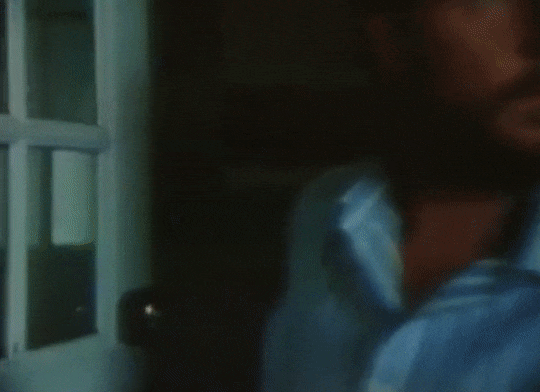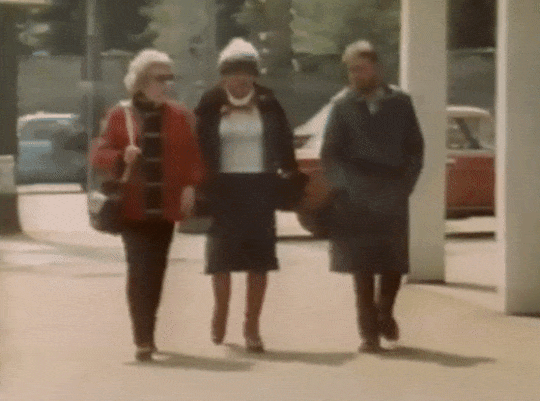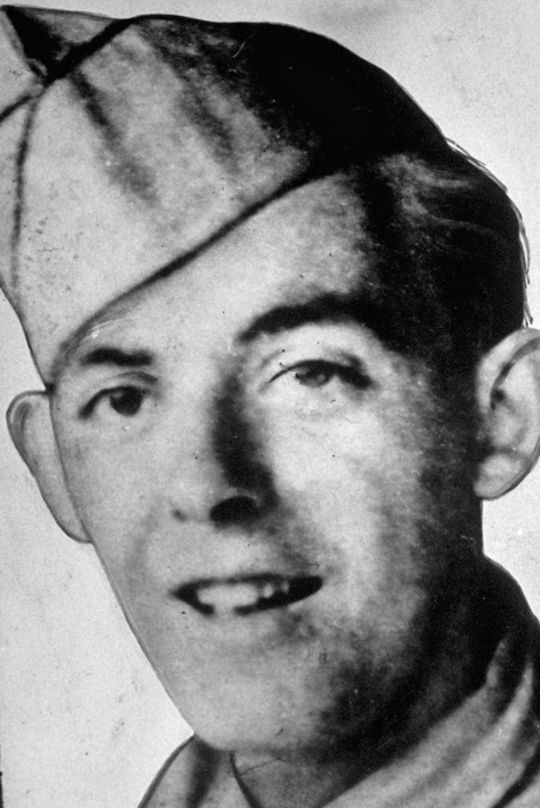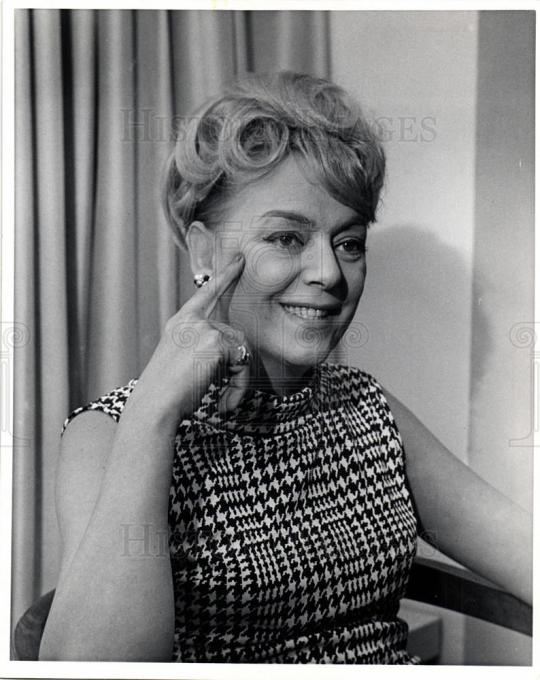#paradiset er ikke til salg
Photo










PARADISET ER IKKE TIL SALG (1985)
dir. Teit Ritzau
A portrait of three people who have undergone a gender-affirming surgery : Christine Jorgensen, the American soldier who came to Denmark, underwent an operation and thereby made international headlines; Hanne Rasmussen, a taxi-driver who changes their gender every morning; and Thomas Holck, a bearded, pipe-smoking trans man. Their stories are framed by the historical facts of the persecution of Magnus Hirschfeld in Germany just before the First World War.
(link in title)
#drive link#lgbt cinema#trans cinema#paradise is not for sale#paradiset er ikke til salg#danish cinema#lgbt#trans#transgender#gender-fluid#denmark#documentary#lgbt movie#trans movies#danish movie#lgbt film#trans film#danish film#lgbt media#trans media#queer cinema#christine jorgensen#hanne rasmussen#thomas holck#teit ritzau#80s movies#1980s cinema#1985#1980s#80s film
12 notes
·
View notes
Photo



Christine Jorgensen (May 30, 1926 – May 3, 1989) was an American transgender woman who was the first person to become widely known in the United States for having sex reassignment surgery. Jorgensen grew up in the Bronx, New York City. Shortly after graduating from high school in 1945, she was drafted into the U.S. Army during World War II. After her military service, she attended several schools and worked; it is during this time she learned about sex reassignment surgery. Jorgensen traveled to Europe, and in Copenhagen, Denmark, obtained special permission to undergo a series of operations beginning in 1952.
She returned to the United States in the early 1950s and her transition was the subject of a New York Daily News front-page story. She became an instant celebrity, known for her directness and polished wit, and used the platform to advocate for transgender people. She also worked as an actress and nightclub entertainer and recorded several songs. Jorgensen often lectured on the experience of being transgender and published an autobiography in 1967.
Jorgensen was the second child of carpenter and contractor George William Jorgensen, Sr., and his wife Florence Davis Hansen, and given a male name at birth. She was raised in the Belmont neighborhood of the Bronx, New York City. She later described herself as having been a "frail, blond, introverted little boy who ran from fistfights and rough-and-tumble games".
Jorgensen graduated from Christopher Columbus High School in 1945 and was soon drafted into the U.S. Army at the age of 19. After being discharged from the Army, she attended Mohawk Valley Community College in Utica, New York,[5] the Progressive School of Photography in New Haven, Connecticut, and the Manhattan Medical and Dental Assistant School in New York City. She also worked briefly for Pathé News.
Returning to New York after military service, and increasingly concerned over, as one obituary later called it, a "lack of male physical development", Christine Jorgensen heard about sex reassignment surgery. She began taking estrogen in the form of ethinylestradiol and started researching the surgery with the help of Joseph Angelo, the husband of a classmate at the Manhattan Medical and Dental Assistant School. Jorgensen intended to go to Sweden, where the only doctors in the world who then performed the surgery were located. During a stopover in Copenhagen to visit relatives, she met Christian Hamburger, a Danish endocrinologist and specialist in rehabilitative hormonal therapy. Jorgensen stayed in Denmark and underwent hormone replacement therapy under Hamburger's direction. She chose the name Christine in honor of Hamburger.
She obtained special permission from the Danish Minister of Justice to undergo a series of operations in that country. On September 24, 1951, surgeons at Gentofte Hospital in Copenhagen performed an orchiectomy on Jorgensen. In a letter to friends on October 8, 1951, she referred to how the surgery affected her:
As you can see by the enclosed photos, taken just before the operation, I have changed a great deal. But it is the other changes that are so much more important. Remember the shy, miserable person who left America? Well, that person is no more and, as you can see, I'm in marvelous spirits.
In November 1952, doctors at Copenhagen University Hospital performed a penectomy. In Jorgensen's words, "My second operation, as the previous one, was not such a major work of surgery as it may imply."
She returned to the United States and eventually obtained a vaginoplasty when the procedure became available there. The vaginoplasty was performed under the direction of Angelo, with Harry Benjamin as a medical adviser. Later, in the preface of Jorgensen's autobiography, Harry Benjamin gave her credit for the advancement of his studies. He wrote, "Indeed Christine, without you, probably none of this would have happened; the grant, my publications, lectures, etc."
The New York Daily News ran a front-page story on December 1, 1952, under the headline "Ex-GI Becomes Blonde Beauty", announcing (incorrectly) that Jorgensen had become the recipient of the first "sex change". This type of surgery had previously been performed by German doctors in the late 1920s and early 1930s. Dorchen Richter and Danish artist Lili Elbe, both patients of Magnus Hirschfeld at the Institut für Sexualwissenschaft in Berlin, were known recipients of such operations in 1930–31.
After her surgeries, Jorgensen originally stated that she wanted a quiet life of her own design, but once returning to the United States, the only way she could manage to earn a living was by making public appearances. Jorgensen was an instant celebrity when she returned to New York in February 1953. A large crowd of journalists met her as she came off her flight, and despite the Danish royal family being on the same flight, they were largely ignored in favor of her. Soon after her arrival, she launched a successful nightclub act and appeared on TV, radio, and theatrical productions. The first of a five-part authorized account of her story was written by Jorgensen herself in a February 1953 issue of The American Weekly, titled "The Story of My Life" and in 1967, she published her autobiography, Christine Jorgensen: A Personal Autobiography, which sold almost 450 thousand copies.
The publicity following her transition and gender reassignment surgery became "a model for other transsexuals for decades. She was a tireless lecturer on the subject of transsexuality, pleading for understanding from a public that all too often wanted to see transsexuals as freaks or perverts ... Ms Jorgensen's poise, charm, and wit won the hearts of millions." However, over time the press was much less fascinated by her and started to scrutinize her much more harshly. She was often asked by print medias if she would pose nude in their publications.
Knox and Jorgensen after being denied a marriage license, April 1959. After her vaginoplasty, Jorgensen planned to marry labor union statistician John Traub, but the engagement was called off. In 1959 she announced her engagement to typist Howard J. Knox in Massapequa Park, New York, where her father had built her a house after her reassignment surgery. However, the couple was unable to obtain a marriage license because Jorgensen's birth certificate listed her as male. In a report about the broken engagement, The New York Times reported that Knox had lost his job in Washington, D.C., when his engagement to Jorgensen became known.
After her parents died, Jorgensen moved to California in 1967. She left behind the ranch home built by her father in Massapequa and settled at the Chateau Marmont in Los Angeles, California, for a period of time. It was also during this same year that Jorgensen published her autobiography, Christine Jorgensen: A Personal Autobiography, which chronicled her life experiences as a transsexual and included her own personal perspectives on major events in her life.
During the 1970s and 1980s, Jorgensen toured university campuses and other venues to speak about her experiences. She was known for her directness and polished wit. She once demanded an apology from Vice President Spiro T. Agnew when he called Charles Goodell "the Christine Jorgensen of the Republican Party". (Agnew refused her request.)
Jorgensen also worked as an actress and nightclub entertainer and recorded several songs. In summer stock, she played Madame Rosepettle in the play Oh Dad, Poor Dad, Mamma's Hung You in the Closet and I'm Feelin' So Sad. In her nightclub act, she sang several songs, including "I Enjoy Being a Girl", in which, at the end, she made a quick change into a Wonder Woman costume. She later recalled that Warner Communications, owners of the Wonder Woman character's copyright, demanded that she stop using the character; she did so, and instead used a new character of her own invention, Superwoman, who was marked by the inclusion of a large letter S on her cape. Jorgensen continued her act, performing at Freddy's Supper Club on the Upper East Side of Manhattan until at least 1982, when she performed twice in the Hollywood area: once at the Backlot Theatre, adjacent to the discothèque Studio One, and later at The Frog Pond restaurant. This performance was recorded and has been made available as an album on iTunes. In 1984, Jorgensen returned to Copenhagen to perform her show and was featured in Teit Ritzau's Danish transsexual documentary film Paradiset er ikke til salg (Paradise Is Not for Sale). Jorgensen was the first and only known trans woman to perform at Oscar's Delmonico Restaurant in downtown New York, for which owners Oscar and Mario Tucci received criticism.
She died of bladder and lung cancer in 1989, four weeks short of her 63rd birthday. Her ashes were scattered off Dana Point, California.
Jorgensen's highly publicized transition helped bring to light gender identity and shaped a new culture of more inclusive ideas about the subject. As a transgender spokesperson and public figure, Jorgensen influenced other transgender people to change their sex on birth certificates and to change their names. Jorgensen saw herself as a founding member in what became known as the "sexual revolution". Jorgensen stated in a Los Angeles Times interview, "I am very proud now, looking back, that I was on that street corner 36 years ago when a movement started. It was the sexual revolution that was going to start with or without me. We may not have started it, but we gave it a good swift kick in the pants."
In 2012 Jorgensen was inducted into the Legacy Walk, an outdoor public display which celebrates LGBT history and people.
In 2014, Jorgensen was one of the inaugural honorees in the Rainbow Honor Walk, a walk of fame in San Francisco's Castro neighborhood noting LGBTQ people who have "made significant contributions in their fields".
In June 2019, Jorgensen was one of the inaugural 50 American "pioneers, trailblazers, and heroes" included on the National LGBTQ Wall of Honor within the Stonewall National Monument (SNM) in New York City's Stonewall Inn. The SNM is the first U.S. national monument dedicated to LGBTQ rights and history, and the wall's unveiling was timed to take place during the 50th anniversary of the Stonewall riots.
Nation of Islam leader Louis Farrakhan, during his earlier career as a calypso singer under the name The Charmer, recorded a song about Jorgensen, "Is She Is or Is She Ain't" (The title is a play on the 1940s Louis Jordan song, "Is You Is or Is You Ain't My Baby".)
Chuck Renslow and Dom Orejudos founded Kris Studios, a male physique photography studio that took photos for gay magazines they published, which was named in part to honor Jorgensen.
Posters for the Ed Wood film Glen or Glenda (1953), also known as I Changed My Sex and I Led Two Lives, publicize the movie as being based on Jorgensen's life. Originally producer George Weiss made her some offers to appear in the film, but these were turned down. Jorgenson is mentioned in connection with Glen in Tim Burton's biopic Ed Wood (1994), but Jorgenson is not depicted as a character.
The Christine Jorgensen Story, a fictionalized biopic based on Jorgensen's memoir, premiered in 1970. John Hansen played Jorgensen as an adult, while Trent Lehman played her at age seven.
In Christine Jorgensen Reveals, a stage performance at the 2005 Edinburgh Festival Fringe, Jorgensen was portrayed by Bradford Louryk. To critical acclaim, Louryk dressed as Jorgensen and performed to a recorded interview with her during the 1950s while video of Rob Grace as comically inept interviewer Nipsey Russell played on a nearby black-and-white television set. The show went on to win Best Aspect of Production at the 2006 Dublin Gay Theatre Festival, and it ran Off-Broadway at New World Stages in January 2006. The LP was reissued on CD by Repeat The Beat Records in 2005.
Transgender historian and critical theorist Susan Stryker directed and produced an experimental documentary film about Jorgensen, titled Christine in the Cutting Room. In 2010 she also presented a lecture at Yale University titled "Christine in the Cutting Room: Christine Jorgensen's Transsexual Celebrity and Cinematic Embodiment". Both works examine embodiment vis-à-vis cinema.
The 2016 book Andy Warhol was a Hoarder: Inside the Minds of History's Great Personalities, by journalist Claudia Kalb, devotes a chapter to Jorgensen's story, using her as an example of gender dysphoria and the process of gender transition in its earliest days.
Jorgensen, Christine (1967). Christine Jorgensen: A Personal Autobiography. New York, New York: Bantam Books. ISBN 978-1-57344-100-1.
#trans history#transgender woman#transgender#trans pride#postop transwomen#1950s#transisbeautiful#transwoman
9 notes
·
View notes